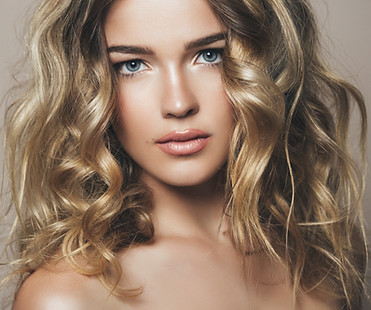SKIN
.png)
The skin is the largest organ of the body which works continuously to keep the body functioning properly.
A few of these significant functions include protection, absorption, sensation, water resistant and heat regulation.
Harmful environmental factors such as UV radiation can damage cells within the body, the skin has a natural defence against this to a certain degree however an SPF is crucial to fully protect us from detrimental cell DNA damage and ageing.
There are three main layers to skin:
The Epidermis - the most outer layer which protects us from the external environment.
The Dermis - the 'live' portion of the skin containing blood vessels, nerves, sebaceous sweat glands and where hyaluronic acid, elastin and collagen are formed.
The Hypodermis - the inner most layer which contains fats and connective tissue which stores energy, regulates heat and insulates the body.
Our skin naturally sheds the outer surface and renews itself over a 28 day cycle however as we age this slows down and wrinkles start to form.
Exfoliating the skin with treatments such as Dermal Planing and Chemical Peels helps to speed this process back up and initiate new skin cells leaving the skin refreshed and more youthful.
As we age we lose collagen and elastin from within the skin and the fatty layer below, which causes skin to sag and wrinkles to occur.
Collagen Therapy stimulates new collagen and elastin formation which helps to reduce the ageing process and restore plumpness to the skin.
Fibroblasts within the Dermis produce elastin and collagen which is necessary to keep the skin healthy and youthful.
.png)
Young Skin
.png)
Ageing Skin

Sunekos Skin Fuel provides these fibroblasts with the essential amino acids and hyaluronic acid it requires to make the best quality collagen and elastin in the skin reducing wrinkles and adding structure back to the skin.
Combining Sunekos Skin Fuel with Collagen Therapy initiates the body to produce good quality and more collagen and elastin.

ACNE
What is Acne?
Your skin is covered in small holes known as pores; these are connected by a follicle to oil glands underneath the skin.
Oil glands (sebaceous glands) produce oil (sebum). This sebum and dead skin cells (keratinocytes) are transferred to the surface of the skin through the follicle.
The follicles also contain hair and as this grows the keratinocytes are pushed out of the skin. Sometimes sebum, skin cells and hair clump together and form a plug blocking the pore and resulting in a swelling. When the plug breaks down a white or blackhead is formed, however, if the follicle wall breaks under the pressure sebum will leak into nearby tissue and form a papule or pustule.
How does this happen?
There may be an excess of skin cells or hyperkeratinization where keratin binds skin cells together clogging the follicle.
What are the types of Acne?
There are six types of acne :
Blackheads – Small black or yellowish bumps that develop on the skin; they are black because the inner lining of the hair follicle produces colour.
Whiteheads – Have a similar appearance to blackheads, but may be firmer and will not empty when squeezed.
Papules – Small red bumps that may feel tender or sore.
Pustules – Are simnilare to papules but they have a white tip in the centre, caused by a build-up of pus.
Nodules – Large hard lumps that build up beneath the surface of the skin and can be painful.
Cysts – Large pus-filled lumps that look similar to boils and carry the greatest risk of causing permanent scarring.
Hormones and stress can also contribute to acne formation by increasing sebum production.
A species of anaerobic bacteria known as Propionibacterium acnes populates skin pores and feeds on sebaceous matter. This bacteria helps prevent harmful bacteria from entering the pores however, problems with breakouts can happen if the bacteria load increases.
How to treat Acne
Use a cleanser containing a combination of anti-inflammatory, anti-bacterial, anti-oxidant and hydrating Salicylic/glycolic/azelaic/retinoid.
Use mineral makeup and SPF which sits on top of the skin instead of chemicals which can block pores.
Have a healthy diet containing essential fatty acids, Vitamin A, C and E, Zinc and soluble fibres.
Professional skin treatments - Facial and Body Peels can improve acne and scaring.
Avoid picking or squeezing acne.

.png)

